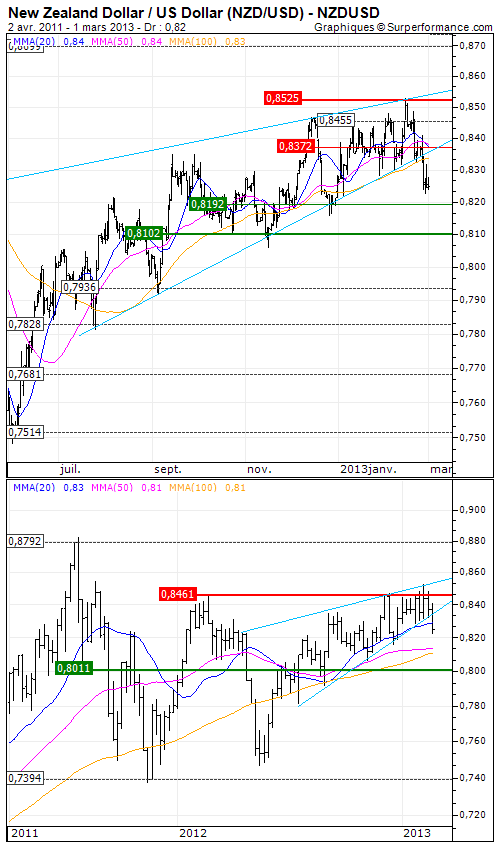New Zealand Dollar / US Dollar (NZD/USD) : The Kiwi under pressure
By Mathieu Burbau
Mainly oriented towards foreign trade, particularly in the agricultural sector, the archipelago enjoys a strong economy, but is dependent from the health of its principal partner: Australia. Similar to the AUD, the New Zealand’s currency, nicknamed Kiwi in reference to the emblematic bird of the country, is highly correlated with commodity prices and its variations are very sensitive to the risk appetite.
In a context of currency war, initiated by the United States last year, the New Zealand dollar rose from USD 0.75 to 0.85 during the last months, penalizing the exporters of the country. The central bank, has announced on January 30th, 2013, a new status quo of its minimum bid rate, which is stagnating at 2.5% since March 10th, 2011. Its governor Graeme Wheeler has indicated that the currency was “very overvalued”, increasing the probability of new measures against the strength of the NZD and informing traders, at the same time, that the Kiwi will not get closer to the parity.
At the macro level, the new trade deficit suffered by the archipelago in January illustrates fears of the authorities while the growth rate also decreased in the third quarter of 2012 (+0.2% against +0.6% in the previous quarter, revised down to +0.3%). On the employment front, the unemployment rate leveled off approximately at 7% since three years after the country had experienced a situation of full employment between 2005 and 2008.
From a graphical viewpoint, the Kiwi is bearish in the short term and could rapidly reach our 0.8102 medium term support in the wake of the Australian dollar, which is testing in its annual lows. We take a short position at the current price.











